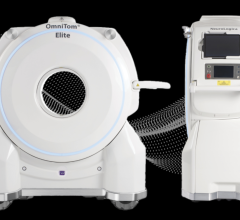
July 8, 2015 - After comparing more than 20,000 brain scans, researchers have identified differences between traumatic brain injury (TBI) and post-traumatic stress disorder (PTSD) despite both conditions sharing common symptoms.
"This discovery is breakthrough information for anyone diagnosed with either TBI or PTSD or both," said Theodore Henderson, M.D., Ph.D., a co-author of the study, published in PLOS One. "Now that we can tell the difference between TBI and PTSD, clinicians can apply more targeted and appropriate treatments, and achieve advances with their patients."
Believed to be the largest functional neuroimaging study ("Functional Neuroimaging Distinguishes Post traumatic Stress Disorder from Traumatic Brain Injury in Focused and Large Community Datasets"), researchers used single photon emission computed tomography (SPECT) to obtain biological differences between TBI and PTSD in the brain. This neuroimaging method and landmark study "demystify" these two conditions that both may appear with symptoms like anxiety, depression, mood dysregulation, irritability and other cognitive breakdowns, according to Henderson.
"This study contained a subset of closely matched patients and a larger dataset of "˜real world' patients with multiple psychiatric or neurological conditions. The accuracy of the closely matched study was 100 percent, which replicates our research on veterans with TBI or PTSD (wherein the accuracy was 94 percent). It clearly delineates the potential of SPECT as a biomarker in differentiating TBI from PTSD - a critical issue for anyone suffering from symptoms with no answers," said Henderson, a Denver-based psychiatrist specializing in treating complex conditions.
Henderson emphasized the importance of obtaining an accurate diagnoses for TBI or PTSD. "They may have similar symptoms, but treatments are very different," he said.
"For example, some treatments for PTSD can actually be useless and possibly even harmful for TBI," said Henderson. "Plus, TBI can refer to injury to any part of the brain, which would require different treatments as well."
Henderson said this news will be particularly noteworthy for the millions of Americans who have played contact sports, citing sport-related concussion incidence rates being reported to top 3 million per year, according to the Center for Disease Control. "I hope to reach out to all the active and retired football players and athletes suffering from either of these conditions."
For more information: www.plosone.org


 July 30, 2024
July 30, 2024 








